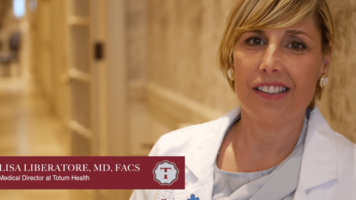Written By David M. Williams | Chief Strategy Officer | LEVO Health
If you’re having trouble gathering patient testimonials, take advantage of these five proven tips.
Your patients are your best referrers. These patients know you, your staff, and you and they’re happy with their results. According to the Harvard Business Review, online reviews are powerful because they give potential patients a good sense of how others suffering the same ailments were treated by you and your staff.
Building out and effective patient testimonial program requires careful planning and insight. First, ensure that you have the proper legal media release forms on hand to authorize each patient testimonial for use in marketing campaigns across all major media types (print, video and audio). Next, build a system internally to elicit and capture positive patient experiences using video, photography and written testimonials. These patient experiences should be structured to capture the chronological steps before, during and after surgery. Highlighting improvements in a patient’s quality of life are especially effective.
The following are five tips to help you create an effective patient testimonial program:
1. Don’t be afraid – The process leading up to asking a patient for a testimonial can be unsettling. If you are uncomfortable asking for patient testimonials, ask yourself these questions: Am I a good physician? Do my services help others? Do people regularly compliment me on my office, staff or bedside manner? If so, potential patients deserve to know about your attentive care.
2. Make it Easy for the Patient – A small percentage of your happy patients will take the time and make the effort to review your practice on sites like Google, Vitals or Yelp, without being prompted; but an even larger percentage are more likely to do so only if you pave the way and make the process as easy and convenient as possible. Provide examples of other patient testimonials, that they can use as a model to help write their own testimonial. Engage your past and current patients through targeted Facebook posts asking for feedback about their experiences with your staff, office or providers.
3. Automate the Process – The most crucial time to reach out to a patient is within 48 hours of their most recent visit. The best way to quickly engage recent patients is through email. Make it a habit to collect and update patient email addresses. Use your practice management software and email server client to automatically email recent patients a personalized follow up letter from the physician. Being timely will also allow you or your staff to identify and address any potential issues before the patient leaves a negative review.
4. Include Your Team – Any team member who interacts with patients should be charged as a steward and representative of your brand. Explain the testimonial process to your medical and front office staff so they can begin talking with patients about your testimonial program. One way to ensure employee buy-in is to create an incentive program or a friendly competition to encourage your team to be more proactive in identifying patients willing to provide positive testimonials.
5. Bragging Rights – Incorporating positive patient testimonials in your marketing and throughout your facility using pictures, printed material and video will help communicate to your prospective and current patients that positive patient outcomes are of utmost importance to your practice.
Did you know?
- 95% share bad experiences and 87% share good experiences with others
- 54% shared bad experiences with 5+ people & 33% shared good experiences with 5+ people
- 58% are more likely to tell others about their customer services experiences today than five years ago
















